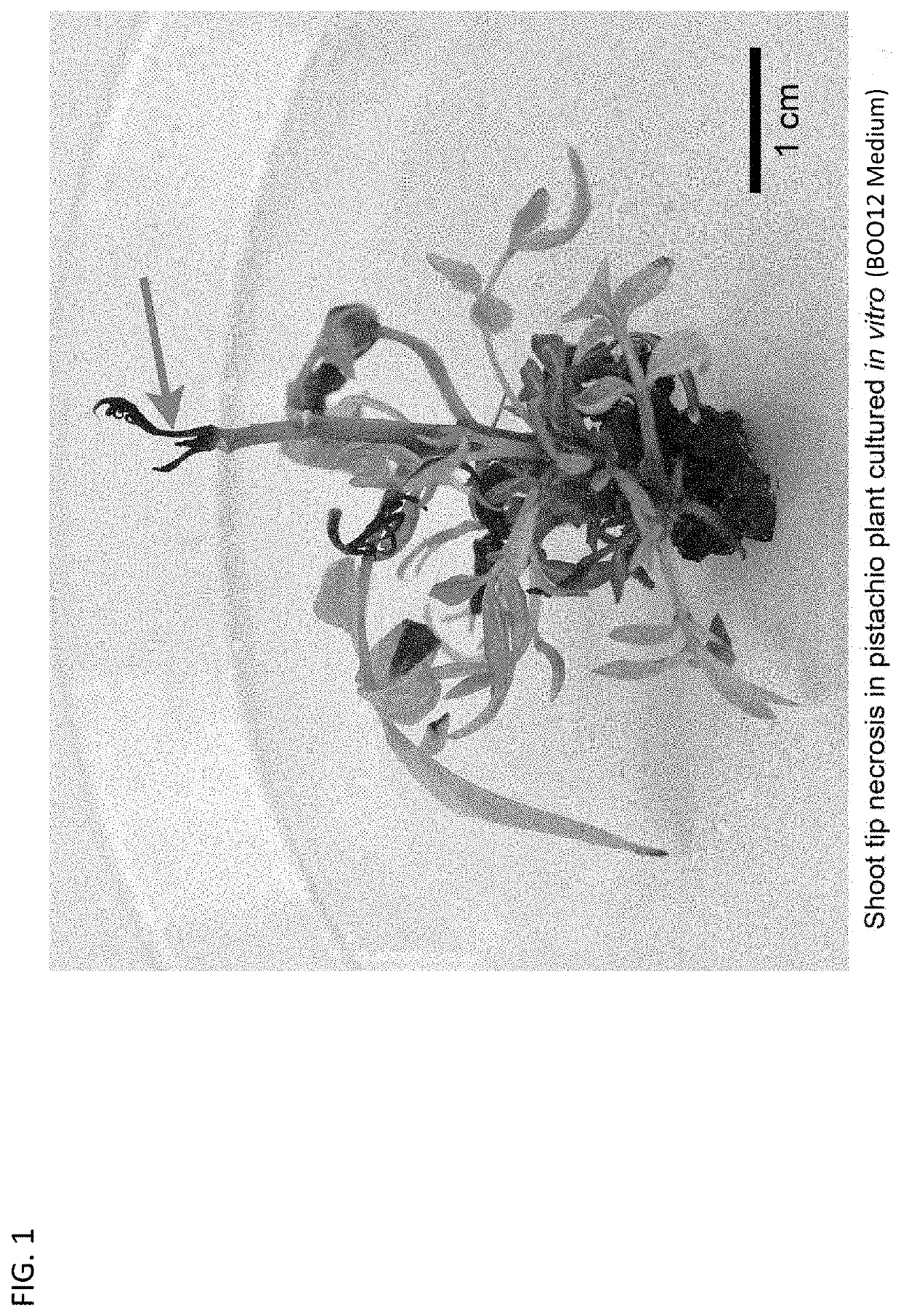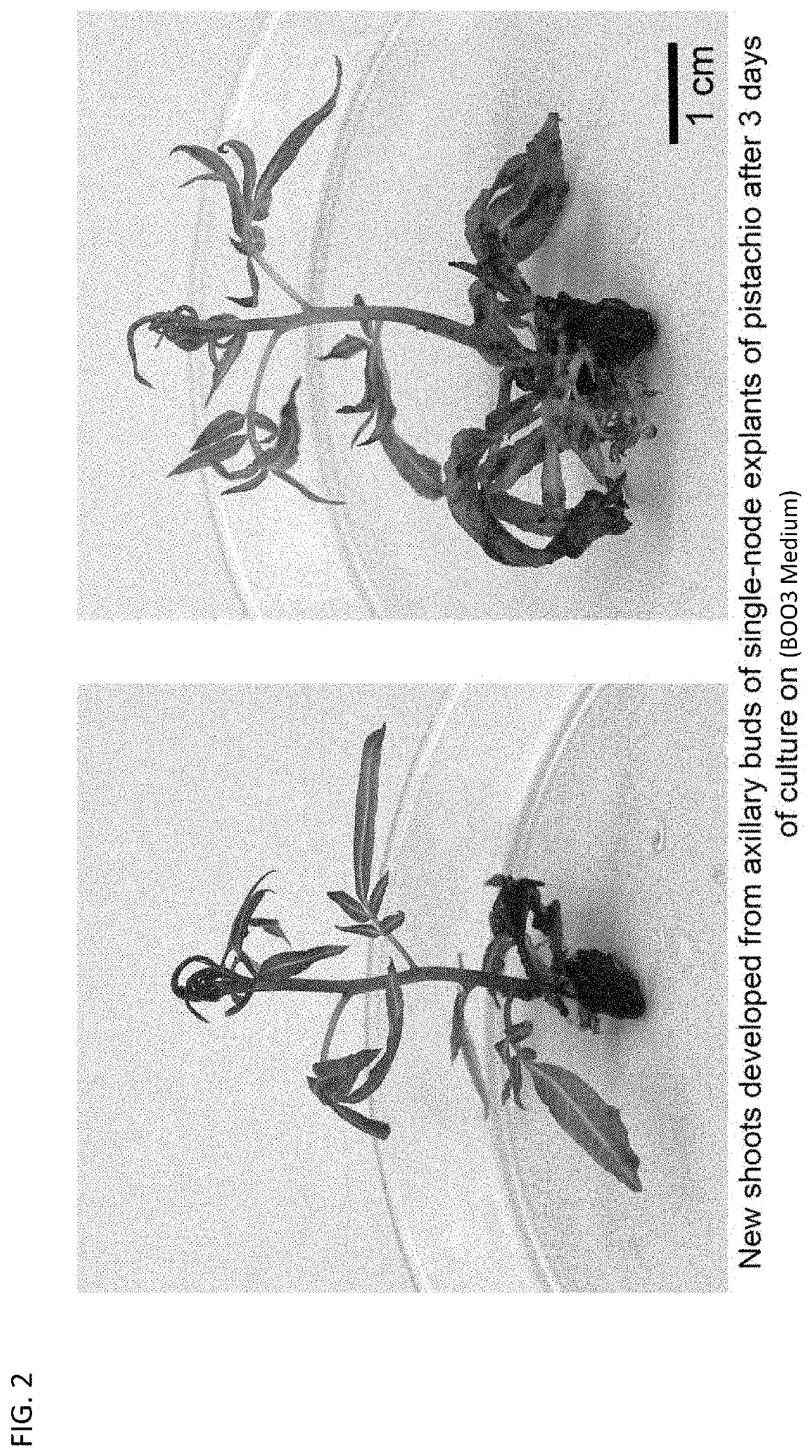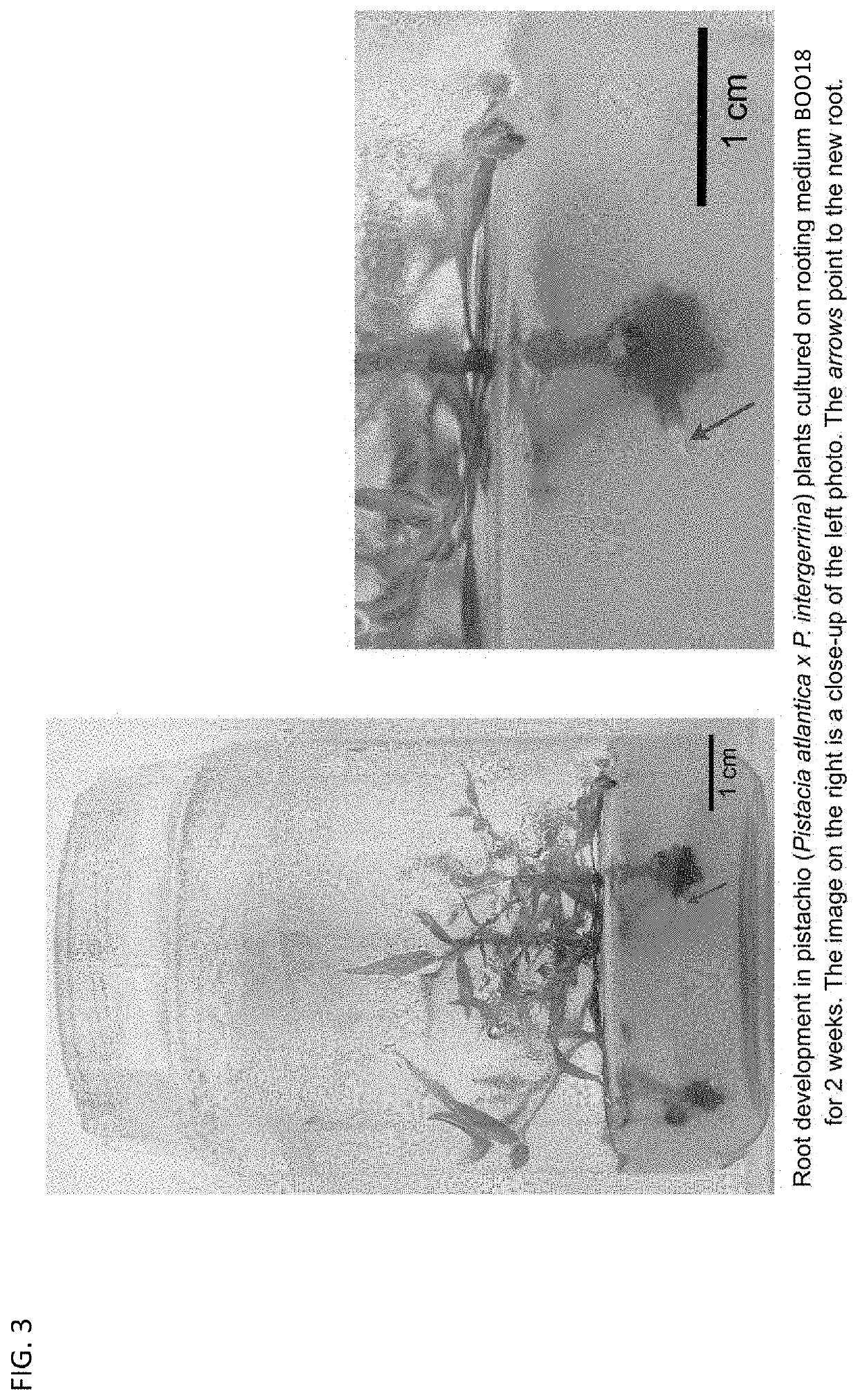Compositions and methods for large-scale in vitro plant bioculture
a technology of composition methods, which is applied in the field of composition methods for large-scale in vitro plant bioculture, can solve the problems of far outweighing the availability of techniques, and achieve the effects of reducing costs, shortening cultivation time, and increasing the quantity and quality of hemp plants
- Summary
- Abstract
- Description
- Claims
- Application Information
AI Technical Summary
Benefits of technology
Problems solved by technology
Method used
Image
Examples
example 1
[0914]Fully developed pistachio plants were cut into single-node explants, shoot tips, basal (bottom) parts of plants with multiple buds, and cultured on different agar-solidified culture media under standard tissue culture conditions (16 h light photoperiod, cool white fluorescent lights at 80-100 μmol / m2 / s light intensity, 24° C.).
[0915]Culture vessels (baby food jars) with ventilated lids are used in all experiments: 1-3 explants per 1 vessel, 12 vessels per each experimental medium, 40 ml of medium in each vessel. The explants are subcultured every 30 days, photographed every week, and observed daily.
[0916]The culture media differed in composition of major macronutrients (e.g., MS vs. WPM vs. DKW), individual elements (calcium, magnesium, phosphorus, zinc copper, boron, etc.), as well as in type and concentration of plant growth regulators (PGRs).
example 2
In Vitro Multiplication on Solid Medium
[0917]From a series of experiments examining the reactions of pistachio plants in vitro, new culture media—BOO3, BOO6, BOO4, and BOO7,—were developed that significantly increased the multiplication rate and overall quality of P. atlantica x P. intergerrina plants. Using these media in pistachio culture consistently resulted in well-developed healthy plants with minimal tissue necrosis (see FIG. 1). The compositions of these media are presented in FIG. 38, and their key advantages are based on data presented below.
[0918]Among all basal media tested, a combination of MS medium containing double concentration of meso elements (CaCl2.2H2O, MgSO4.7H2O, and KH2PO4), double iron, and Gamborg's vitamins was found to be the best for both plant growth and multiplication rate. Because the type and dosage of PGRs are usually the key factors controlling the morphogenetic response of plant cells in vitro, the main work was focused on testing various concentr...
example 3
In Vitro Rooting on Solid Medium
[0919]For rooting, the 3-4-week-old plants were pre-rooted on high-sucrose-containing media BOO5 or BOO11 for 1-3 weeks, then cultured on IBA-containing BOO8, BOO9, or BOO10 media (FIG. 38) for 2-4 weeks until roots developed. See, FIG. 3.
[0920]Alternatively, the pistachio plants were briefly exposed to high concentrations of IBA (BOO13, BOO14, BOO15, or BOO16 media, FIG. 38) for 1-24 hours, and then cultured on BOO8 medium for 2-4 weeks.
PUM
 Login to View More
Login to View More Abstract
Description
Claims
Application Information
 Login to View More
Login to View More - R&D
- Intellectual Property
- Life Sciences
- Materials
- Tech Scout
- Unparalleled Data Quality
- Higher Quality Content
- 60% Fewer Hallucinations
Browse by: Latest US Patents, China's latest patents, Technical Efficacy Thesaurus, Application Domain, Technology Topic, Popular Technical Reports.
© 2025 PatSnap. All rights reserved.Legal|Privacy policy|Modern Slavery Act Transparency Statement|Sitemap|About US| Contact US: help@patsnap.com



